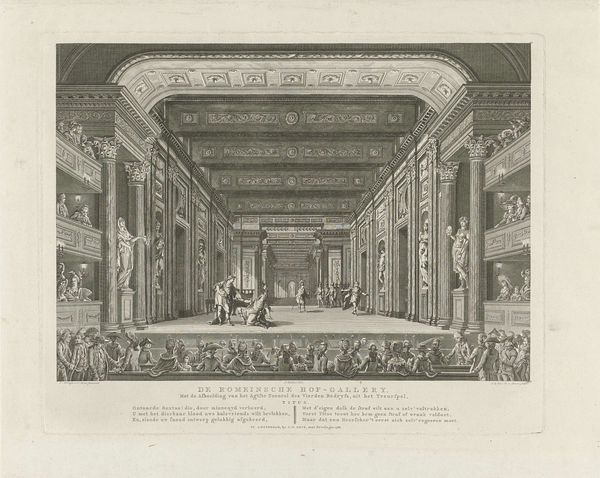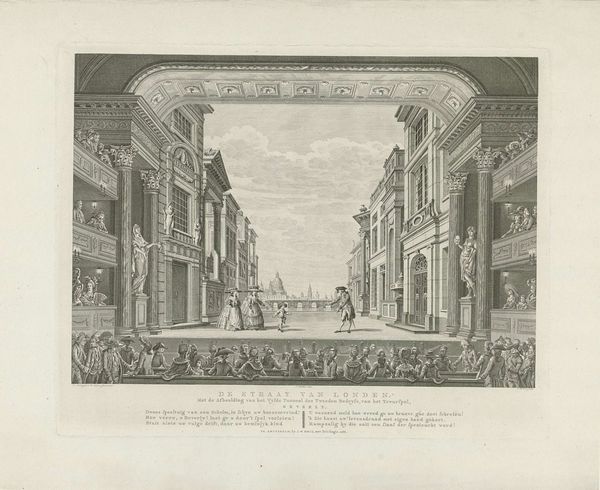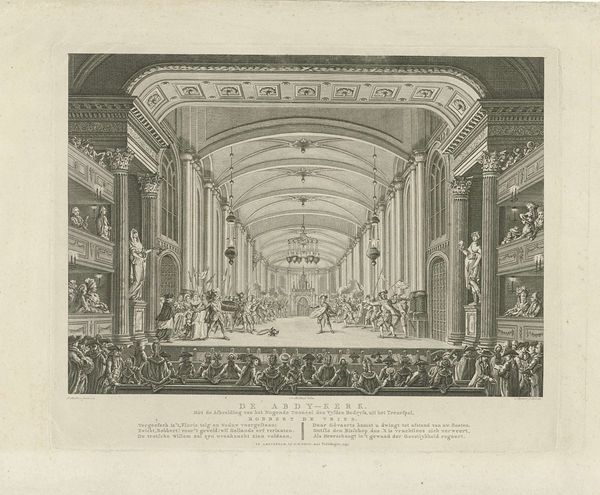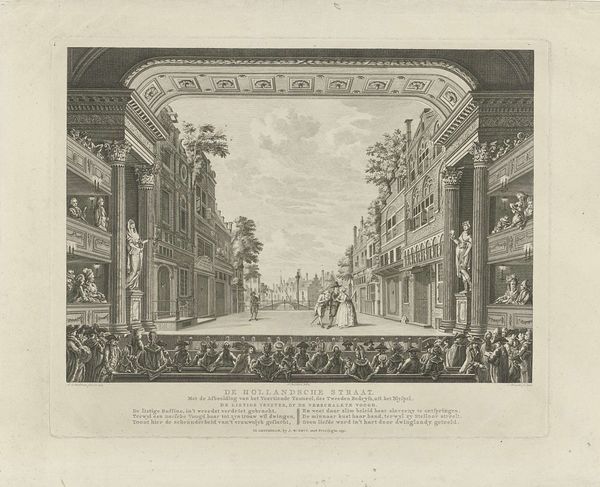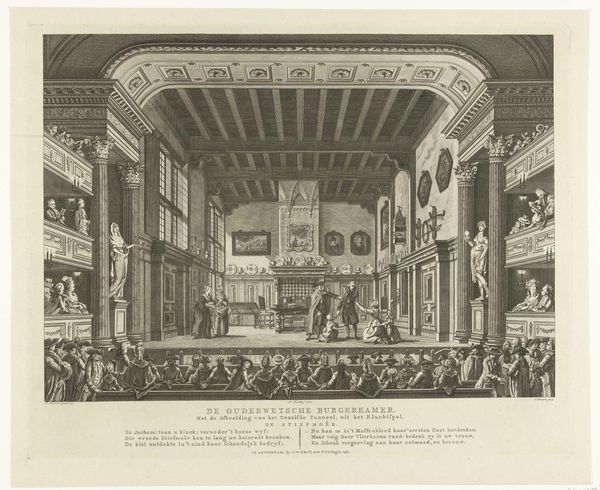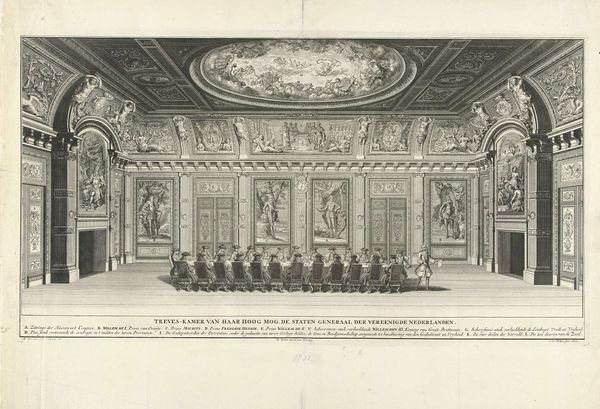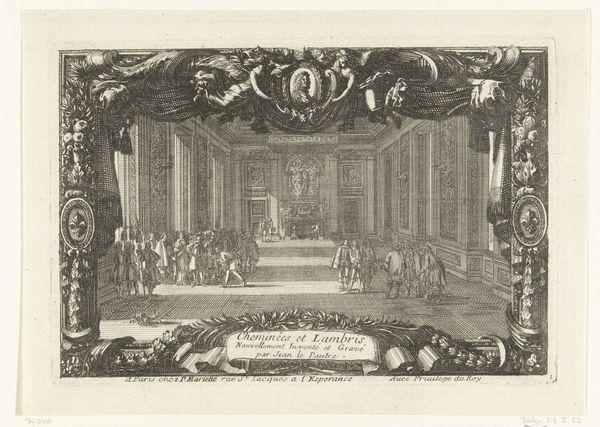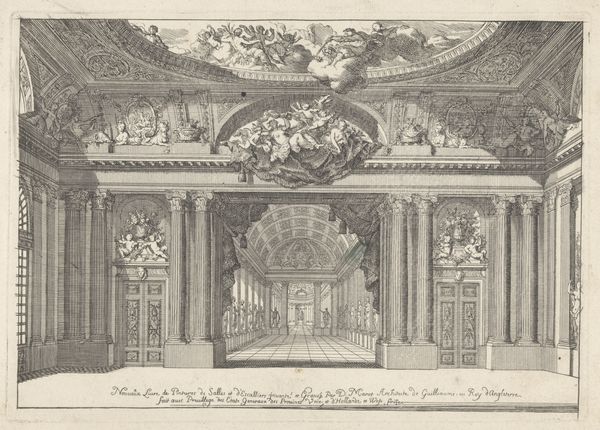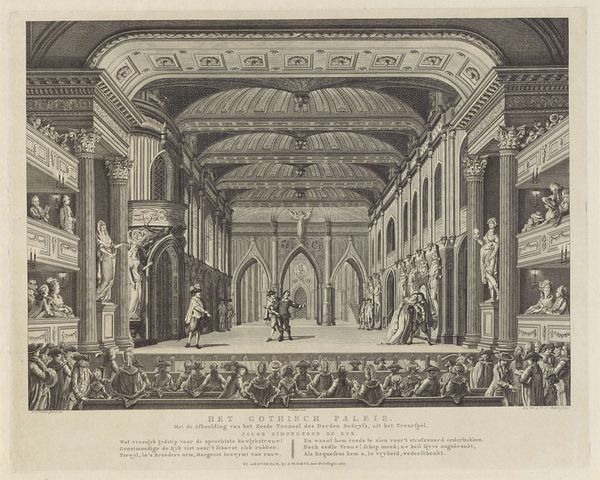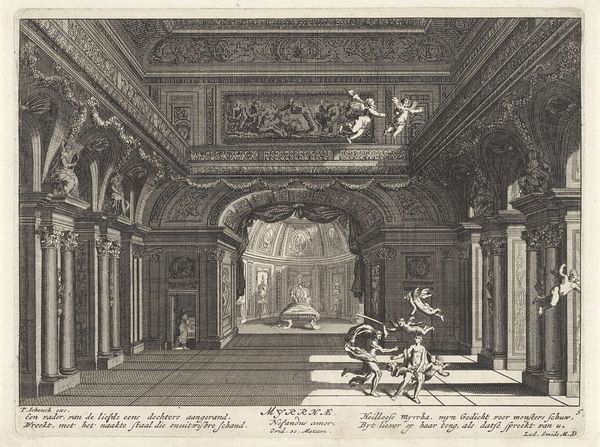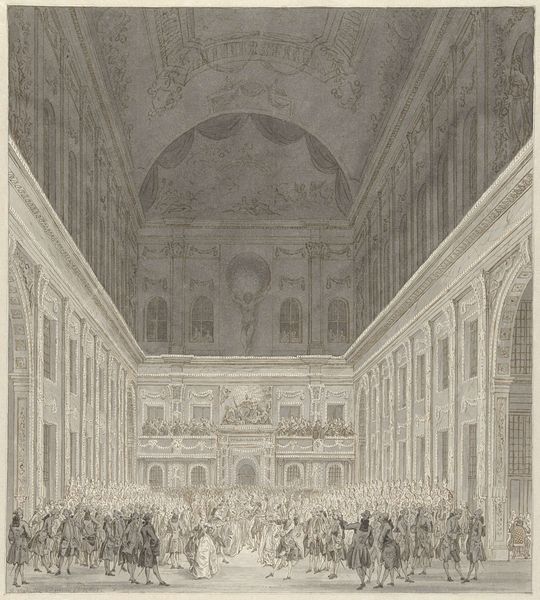
Dimensions: height 331 mm, width 417 mm
Copyright: Rijks Museum: Open Domain
Curator: Today, we’re examining Cornelis Brouwer's 1787 engraving, "Schouwburg met toneeldecor: De Moderne Zaal," which depicts a theatrical performance in progress. Editor: It’s remarkably intricate. The linear precision conveys a potent sense of depth, though the density of detail verges on overwhelming. It's quite Baroque in its abundance. Curator: Brouwer certainly uses line to create spatial recession. Note how the lines converge toward the back of the stage, employing perspective to amplify the sense of depth. The architectural details also adhere to a kind of Baroque vocabulary, though arguably of a late iteration, when such theatrical forms became more accessible to merchantilist interests. Editor: I am curious about that—the stage within a stage. Is there any information about who this "Modern Hall" catered to, historically? Was theatre a communal event? Curator: Indeed, the engraving reveals much about theatrical culture in the late 18th century. Public theaters, especially in urban centers, acted as social and cultural hubs for diverse audiences. In the Dutch Republic, theatre attendance wasn't limited to the aristocracy, with civic performances gaining wider access as well. As to Brouwer's intentions with the perspectival space itself... it's less to document theatrical sociality than to offer us, as viewers, that deep pictorial illusion, rendered expertly in black and white lines. Editor: But look at the details in the audience! The people gazing toward the spectacle onstage... they bring the city’s everyday life indoors, right? This reminds me of Hogarth in London... an attempt to distill social norms and hierarchies. Curator: It’s a fascinating contrast you raise: the performance onstage versus the "performance" of social roles within the audience itself. It reveals an intricate dance between illusion and reality. Formally, I suggest you examine the drapery details toward the top center of the proscenium—its delicate engraving contrasts sharply with the heavy massing of the viewing audience. Editor: Point taken. Still, the work as a whole implies theatre was morphing into something more than just spectacle. It provided a stage—literal and figurative—for civic engagement, the drama reflected perhaps less onstage than amongst the audience in attendance. Curator: A stimulating observation. The engraving masterfully uses its architectural perspective to both define form but also engage us in larger cultural conversations from the past.
Comments
No comments
Be the first to comment and join the conversation on the ultimate creative platform.
